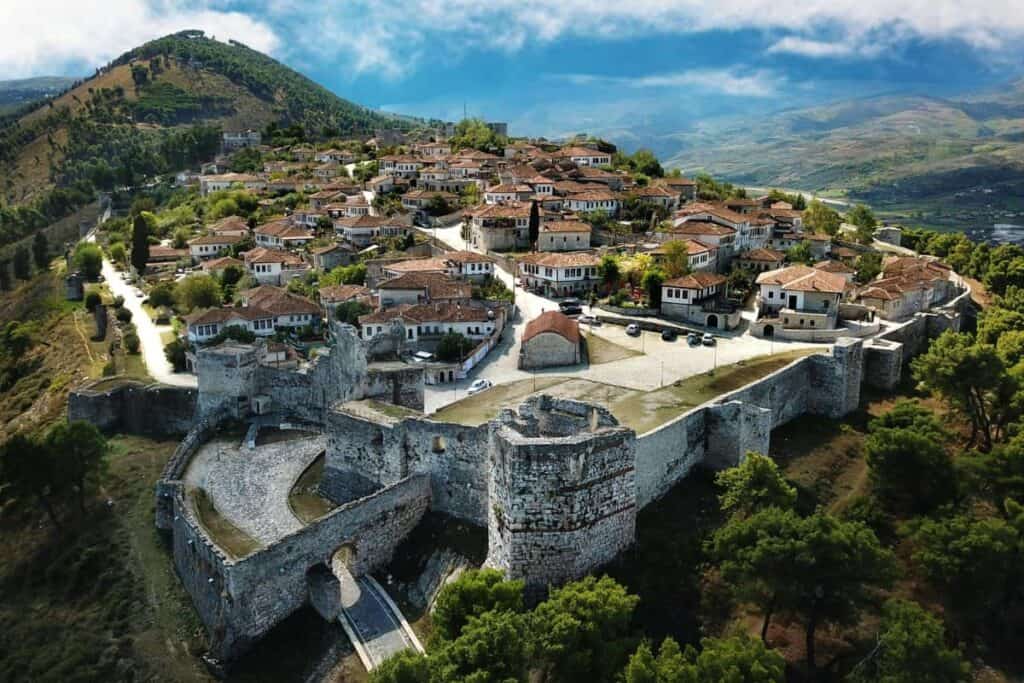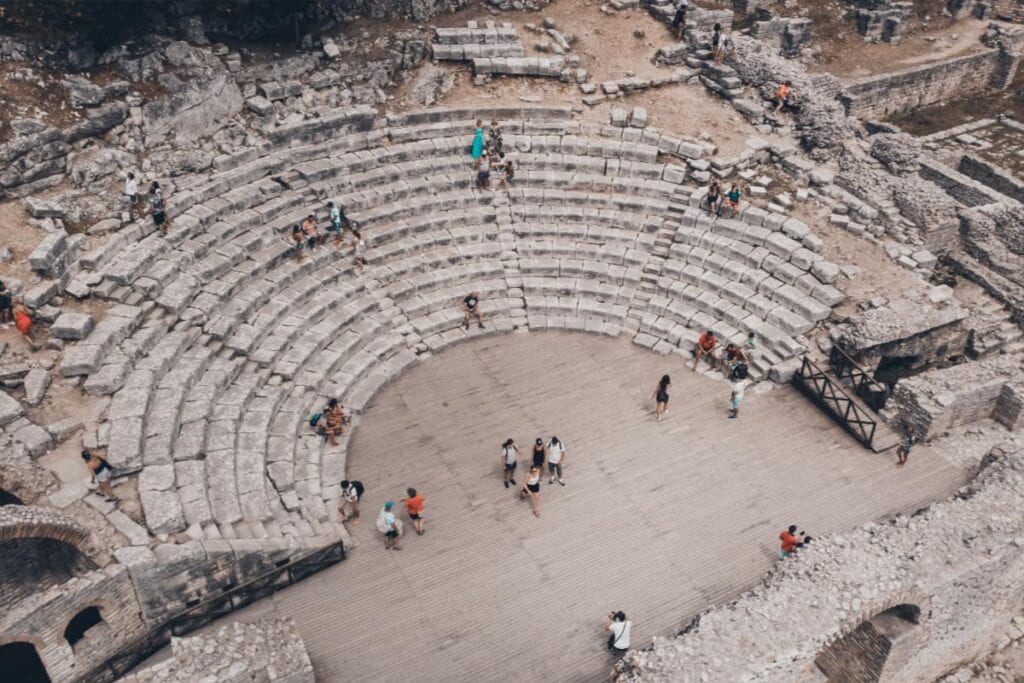Uncovering the Rich Cultural Heritage of South Albania
South Albania is a region where history and culture intertwine seamlessly. From ancient ruins to living traditions, it offers a journey through time that showcases Albania’s vibrant heritage. Whether exploring UNESCO sites or engaging in local customs, South Albania is a must-visit for culture enthusiasts.
1. Butrint: A UNESCO World Heritage Site
Butrint, one of Albania’s most famous landmarks, is a treasure trove of history spanning thousands of years.
What to Explore:
- The ancient theater, agora, and basilica.
- Stunning mosaics and the Lion Gate.
- The Venetian Tower overlooking Lake Butrint.
Why It’s Unique: Butrint offers a rare glimpse into the lives of ancient Greeks, Romans, and Byzantines.
Tip: Visit early in the morning to avoid crowds and enjoy the site in peace.
2. Gjirokastër: The City of Stone
A UNESCO World Heritage Site, Gjirokastër is a beautifully preserved Ottoman-era city.
Highlights:
- Gjirokastër Castle, which houses a military museum and offers panoramic views.
- Traditional stone houses with distinct architectural styles.
- The Ethnographic Museum, is located in the birthplace of dictator Enver Hoxha.
Why Visit: Gjirokastër’s charm lies in its blend of history, culture, and stunning landscapes.
Tip: Wander through the cobbled streets of the Old Bazaar for local crafts and souvenirs.
3. The Bektashi Tekke of Melan
The Melan Tekke, located near Përmet, is a significant site for Albania’s Bektashi community.
What to Experience:
- Learn about the spiritual practices of the Bektashi Order.
- Enjoy the serene surroundings, perfect for reflection.
Why It’s Special: The tekke highlights Albania’s religious harmony and its unique spiritual heritage.
Tip: Combine your visit with a trip to the nearby Langarica Canyon.
4. The Monastery of St. Mary in Zvërnec
Located on the small Zvërnec Island near Vlorë, this monastery is a peaceful retreat steeped in history.
What to Explore:
- The 13th-century monastery is surrounded by lush pine forests.
- The wooden bridge connects the island to the mainland.
Why It’s Unique: The island’s tranquil atmosphere makes it a perfect escape from bustling cities.
Tip: Visit during sunset for magical views and a serene experience.
5. Vuno Village: A Cultural Time Capsule
Vuno, perched on the Albanian Riviera, is a traditional village where time seems to stand still.
What to Do:
- Explore narrow streets lined with stone houses.
- Visit the Church of St. Spyridon, a local landmark.
- Attend festivals featuring traditional music and dance.
Why Visit: Vuno’s authenticity and breathtaking views make it a cultural gem.
Tip: Stay in a guesthouse to immerse yourself in the village’s daily life.
6. The Archaeological Site of Amantia
While often overlooked, Amantia is a fascinating site that offers insight into Albania’s ancient past.
What to See:
- The ancient stadium and acropolis.
- Ruins of temples and fortifications.
Why It’s Worth Visiting: Amantia provides a quieter alternative to Butrint with an equally rich history.
Tip: Bring comfortable shoes and water, as the site involves some walking.
7. Dhërmi’s Hidden Churches
The village of Dhërmi is home to several hidden churches with historical and cultural significance.
What to Discover:
- The Church of St. Mary is known for its frescoes.
- The Monastery of St. Theodore is perched on a hill with stunning views.
Why Visit: These churches offer a spiritual experience and a chance to explore Albania’s Orthodox heritage.
Tip: Ask locals for directions, as some churches are off the beaten path.
8. Himara’s Polyphonic Singing Tradition
Polyphonic singing, recognized by UNESCO, is a treasured tradition in South Albania, particularly in the Himara region.
Where to Hear It:
- Local festivals and celebrations.
- Performances are organized in the village squares.
Why It’s Unique: This ancient form of music reflects the deep cultural roots of the region.
Tip: Attend a festival to witness this tradition in its most authentic setting.
9. The Museum of Independence in Vlorë
The Museum of Independence in Vlorë commemorates Albania’s declaration of independence in 1912.
What to Explore:
- Exhibits featuring historical documents and artifacts.
- The building where Albania’s independence was proclaimed.
Why It’s Important: The museum provides a deep understanding of Albania’s modern history.
Tip: Pair your visit with a walk along the Lungomare for a mix of history and scenic beauty.
Tips for Exploring Cultural Treasures in South Albania
- Take Your Time: Many cultural sites deserve a few hours to fully appreciate their history and significance.
- Hire Guides: Local guides can provide fascinating insights and stories about the sites.
- Be Respectful: Dress modestly and follow local customs, especially when visiting religious sites.


